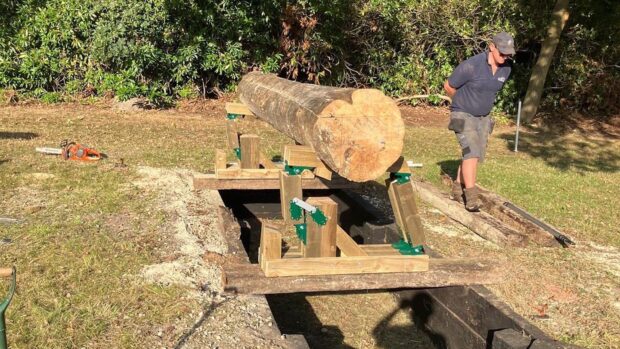Frangible pins
Fragible pins were first introduced into the sport of eventing in 2002, when they were trialled at nine British Eventing horse trials, including the Mitsubishi Motors Badminton Horse Trials. Following this successful trial, they were introduced on suitable new cross-country fences at every level of British Eventing competitions ahead of 2006.
The breakable metal pins are inserted between the top rail and the uprights supporting it. The pin is designed to drop the jump’s top element by at least 20cm if the fence is hit from above, which research confirmed happens when a horse somersaults over a fixed fence. This drop is designed to allow the horse to get a leg forward to save itself from rotating over the fence, although it may not prevent the horse from falling. The pins were originally fitted in front of the upright supporting the top rail of the fence, but in 2010 this was changed so the pins were fitted behind the upright instead.
The frangible pin has been designed to be used on post and rail style fences, but Swedish company New Era has developed the MIM safety clip, which can be used on on other obstacles, including tables. The clip’s inventor, Mats Bjornetun, explains: “The clip is different [from the pin] in that it responds to the horizontal impact of a load hitting a fence and the fence can be rebuilt in a matter of seconds.”
A recent study by Anders Flogård, the designer of the MIM safety clip, suggests that the forces involved in a rotational fall are initially horizontal, followed by vertical, so reverse frangible technology allows the fence to be driven forwards in the same direction as the horse. This reduces the rotational speed, giving the horse a better chance of recovering and staying on its feet.
The penalties for breaking a frangible pin have been a subject of heated debate and have changed over time from elimination through to a number of penalties. Currently riders receive 11 penalties for breaking a frangible pin.














